In November of 2022, UT SCDT hosted an event called "Ride the Synthwave." To learn more about this event as well as my personal contributions beyond this project, see the post linked here.
In Mk Haley's Themed Entertainment Design class, we were assigned to contribute to “the ambiance” of this event. While it was a somewhat vague assignment, I immediately had two ideas come to mind. Mk had mentioned that there were several (expensive!!!) monitors, but also that one of her students from another class needed help using Arduino programming to implement a lighting element to their project. After learning that the aforementioned student was my friend Peter, I decided to assist with this project as my contribution.
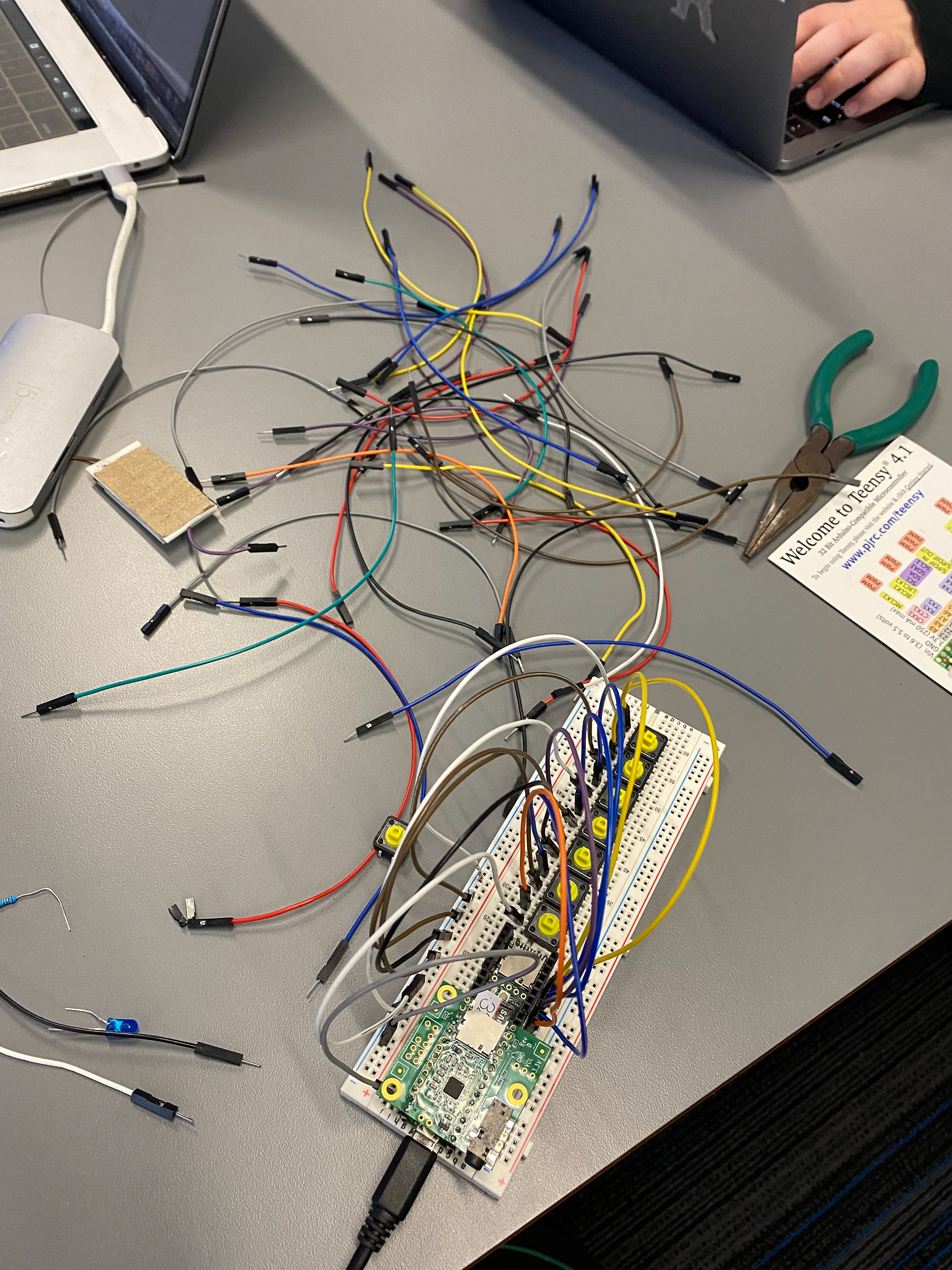
Prototyping our code
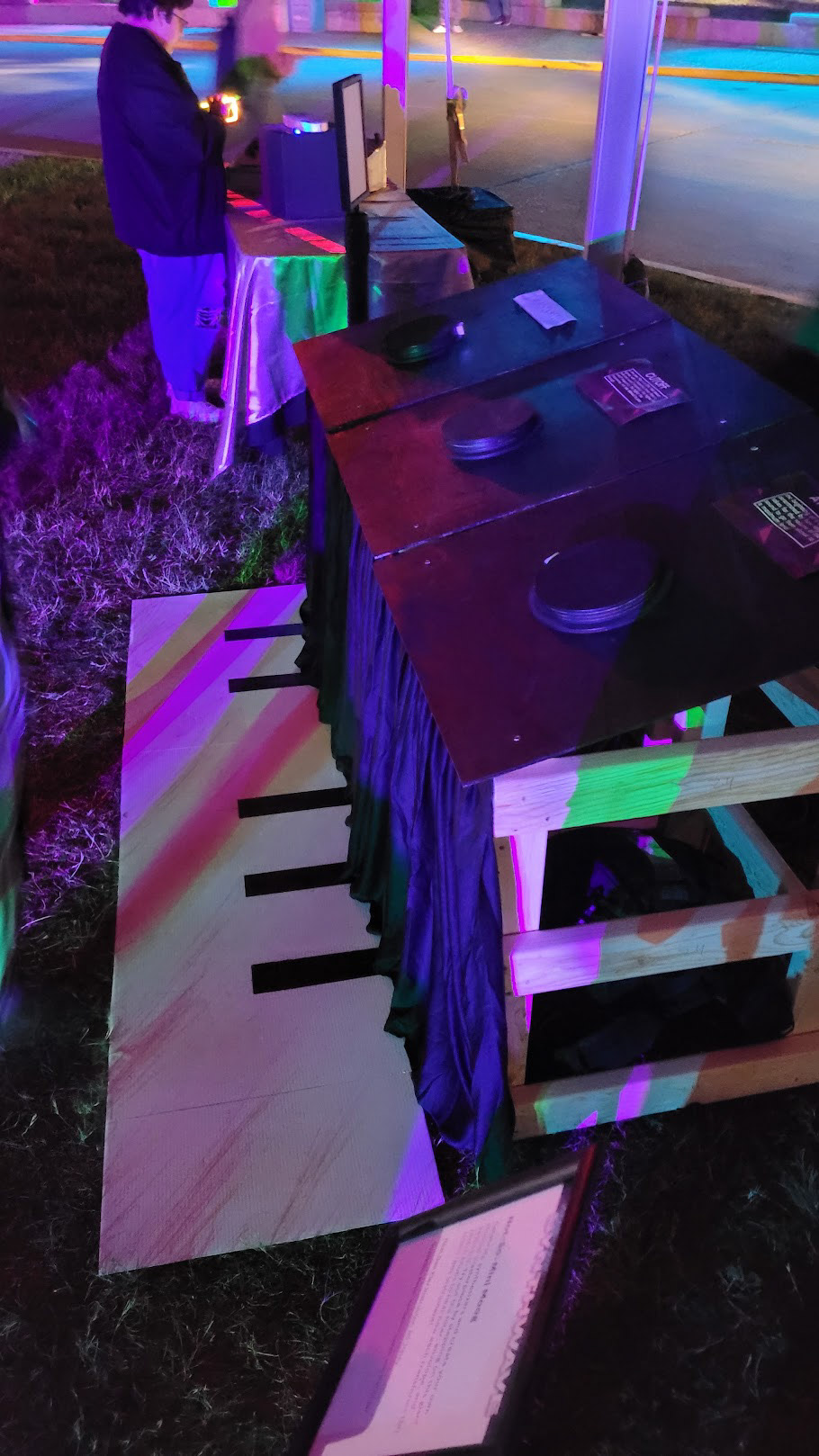
During the show

AET Department Chair playtesting the very first prototype
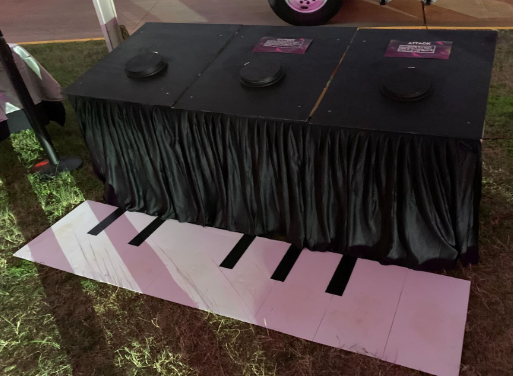
Finished piece, just before the event began

Initial sketch of concept
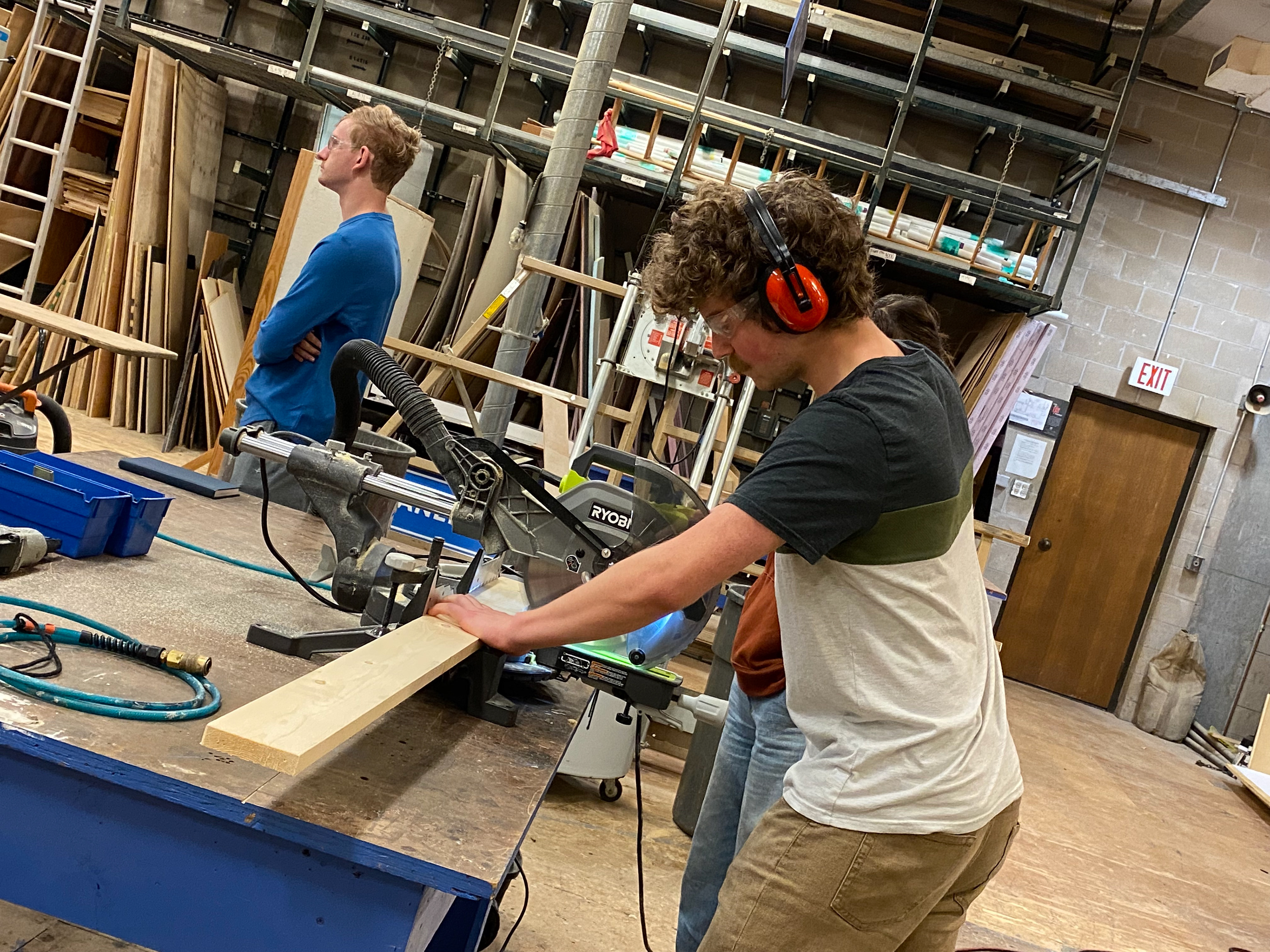
Peter working in the Fabrication Shop

First Person POV of first prototype
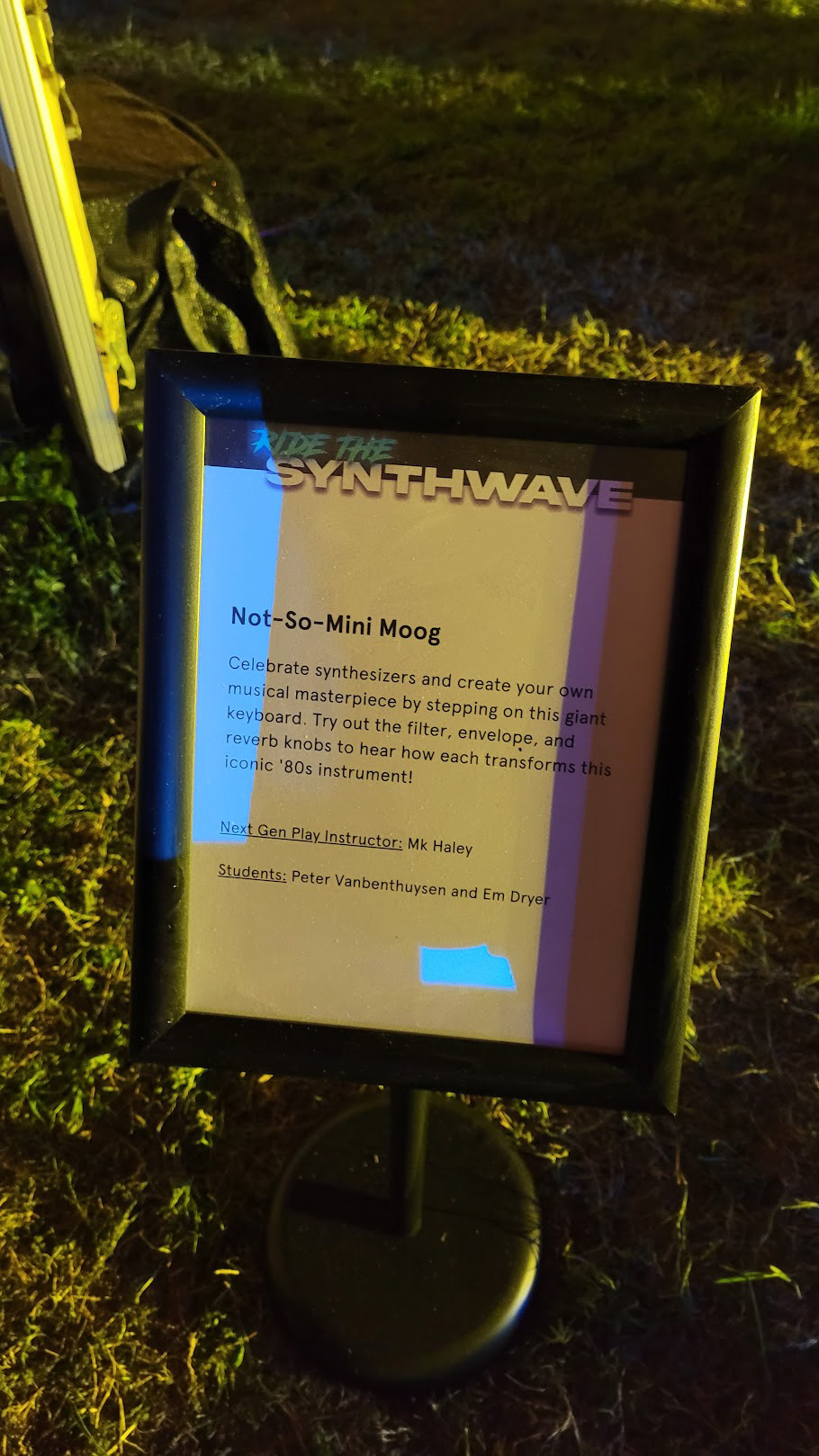
PR Description Plate
Below, I have attached the formal documentation as well as my retrospective analysis of the project. We also may continue to iterate this project in the Spring of 2022.

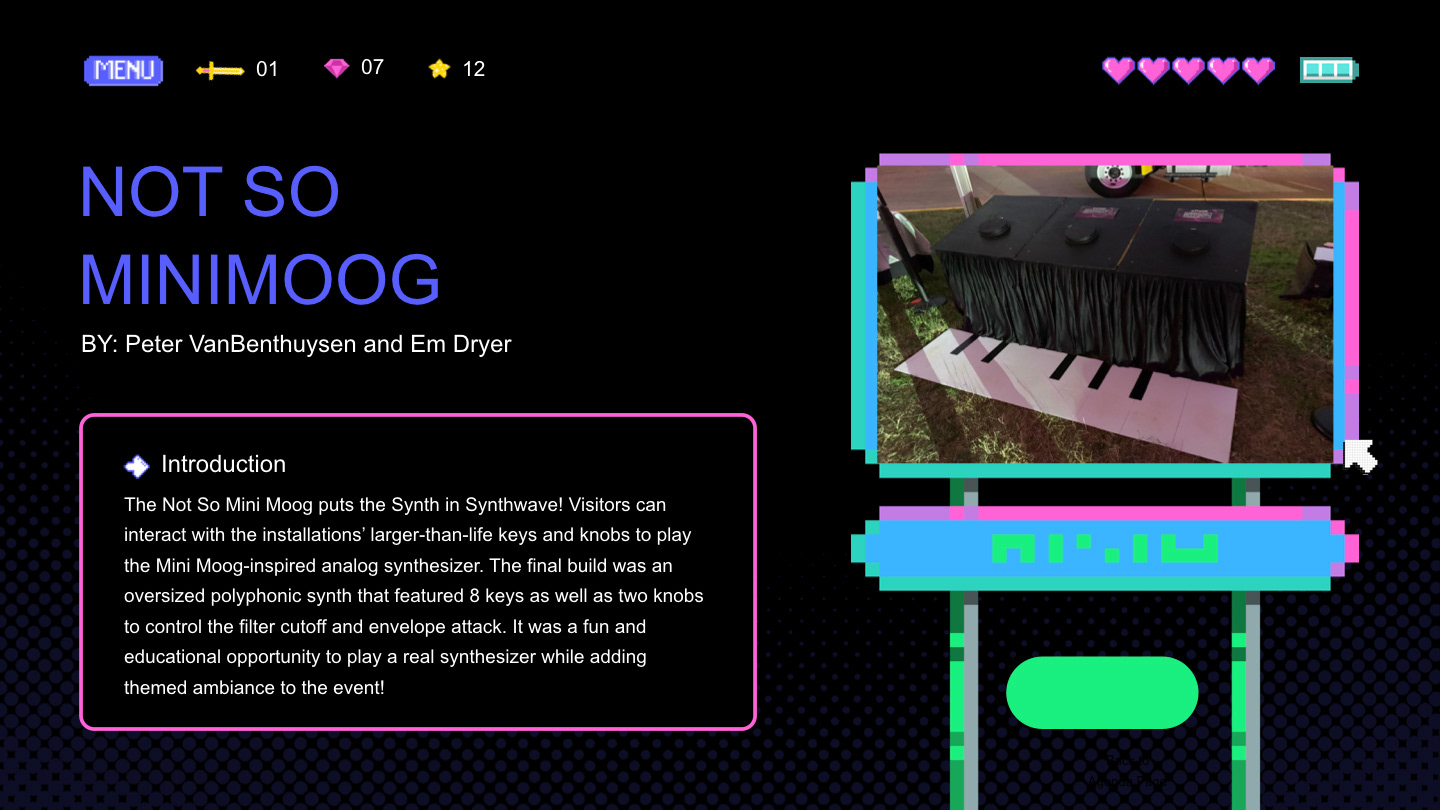
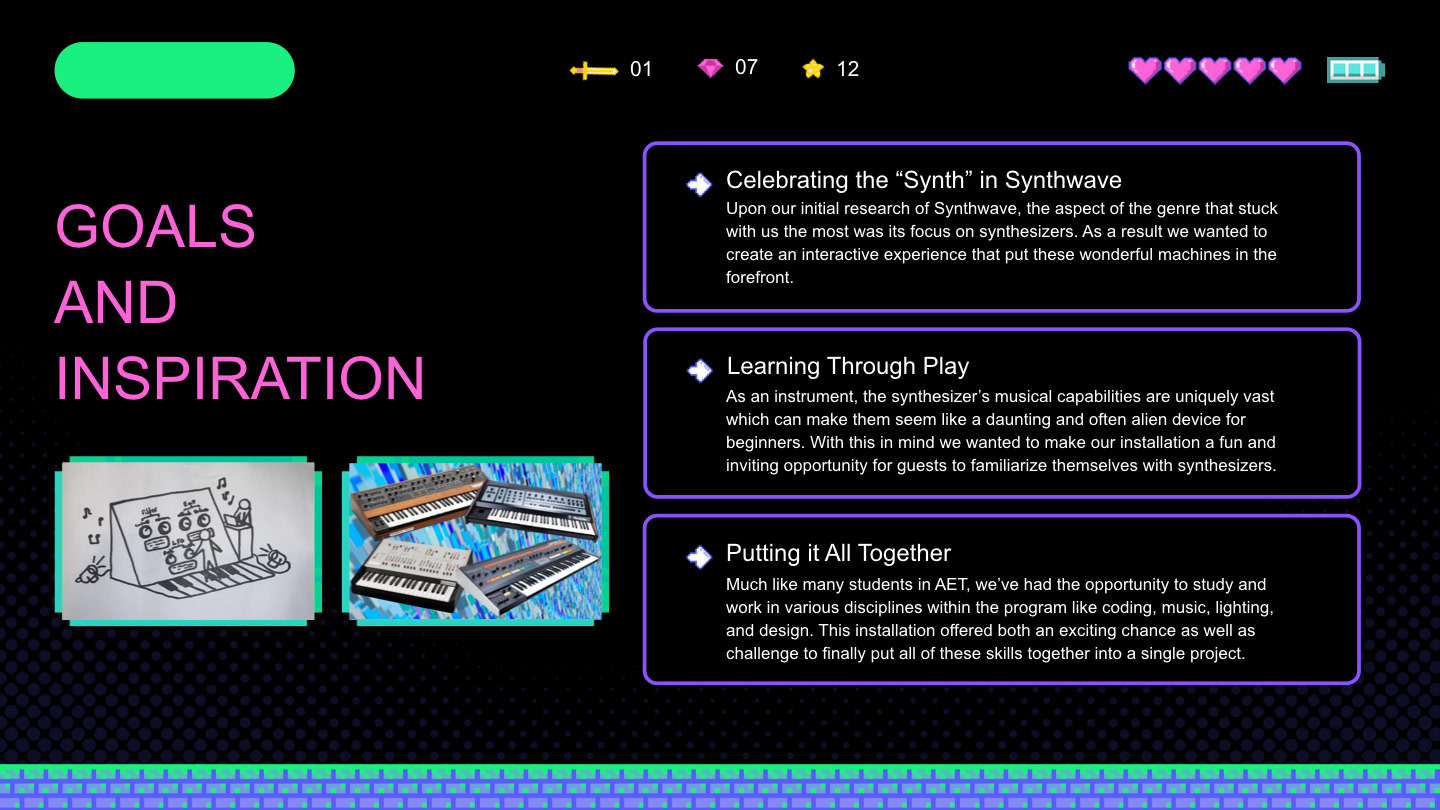

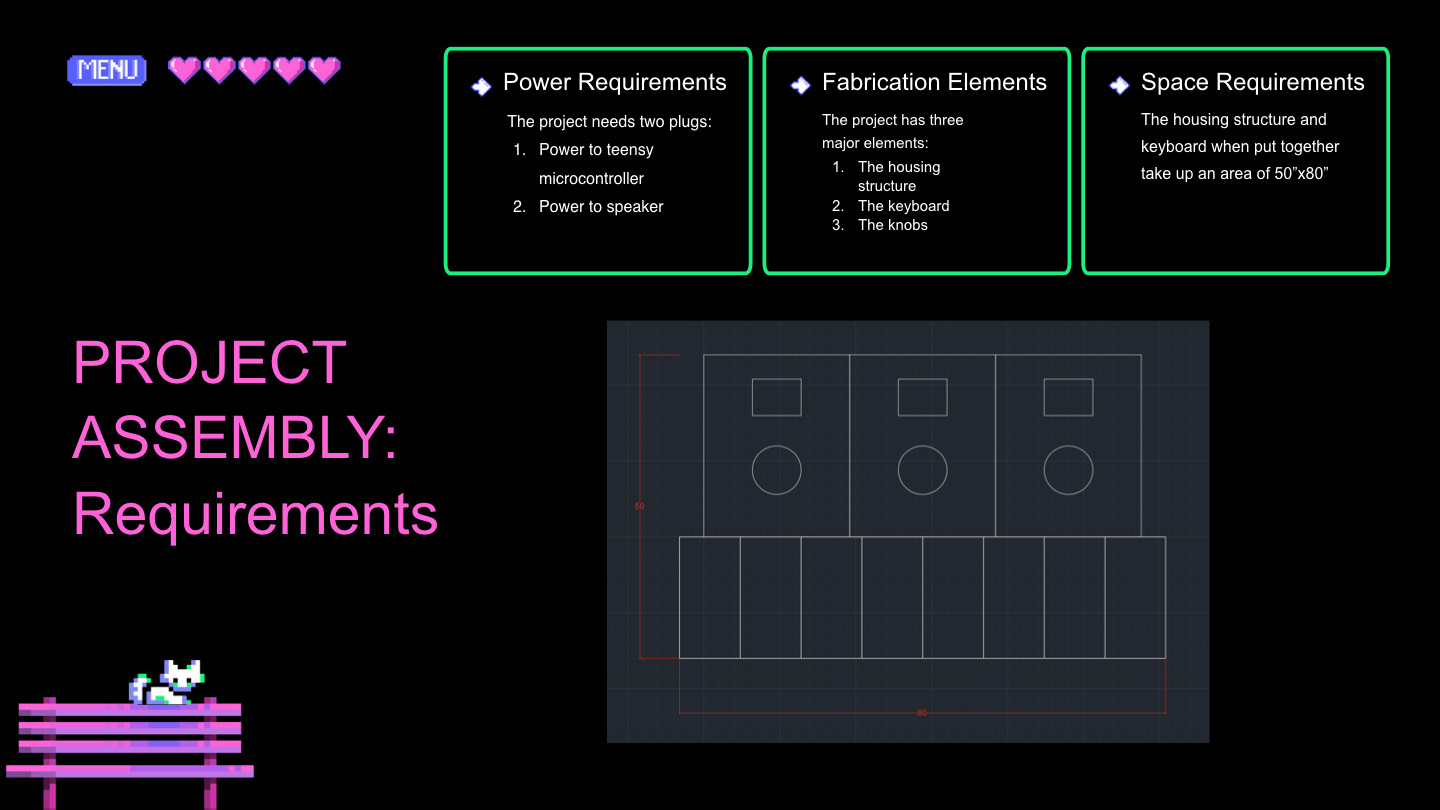

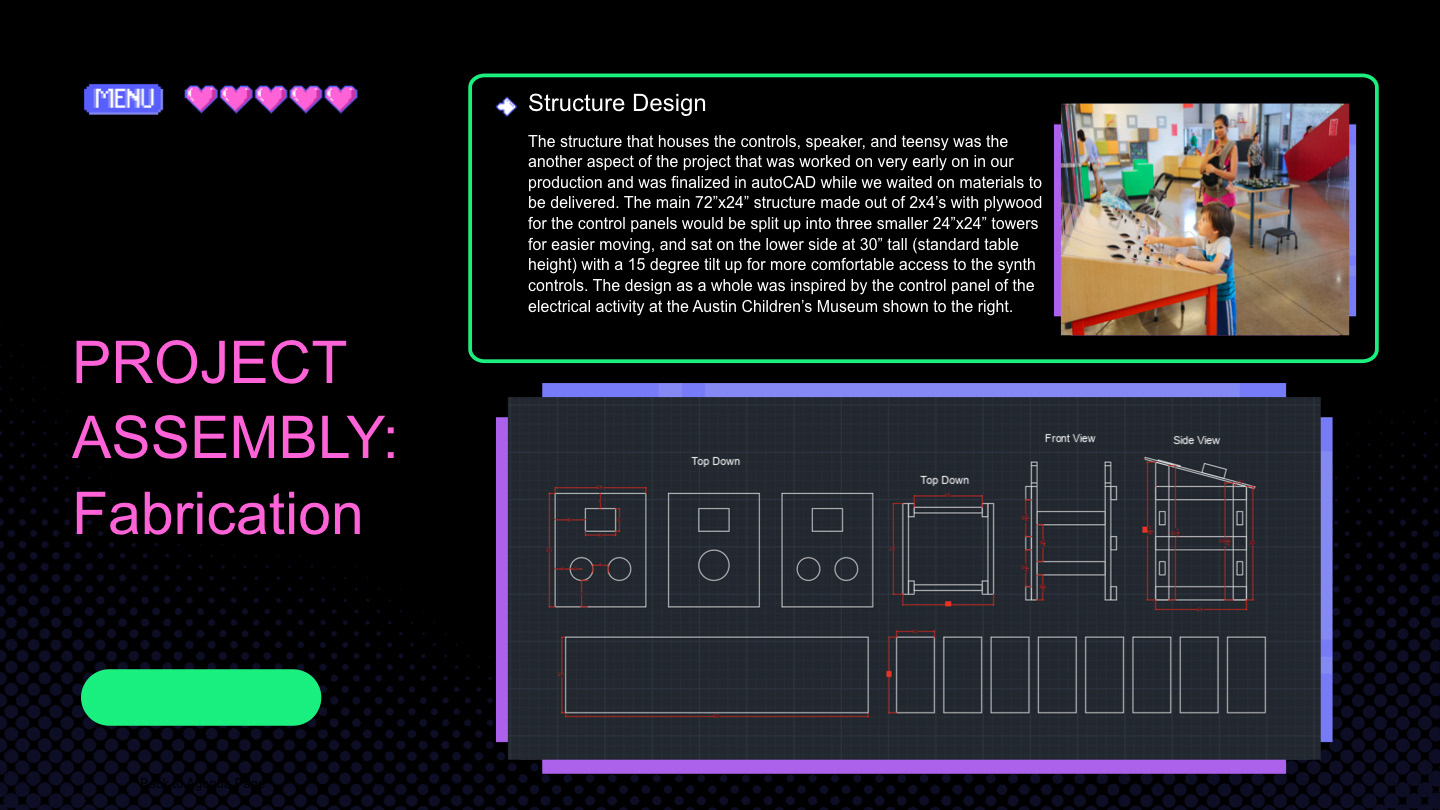
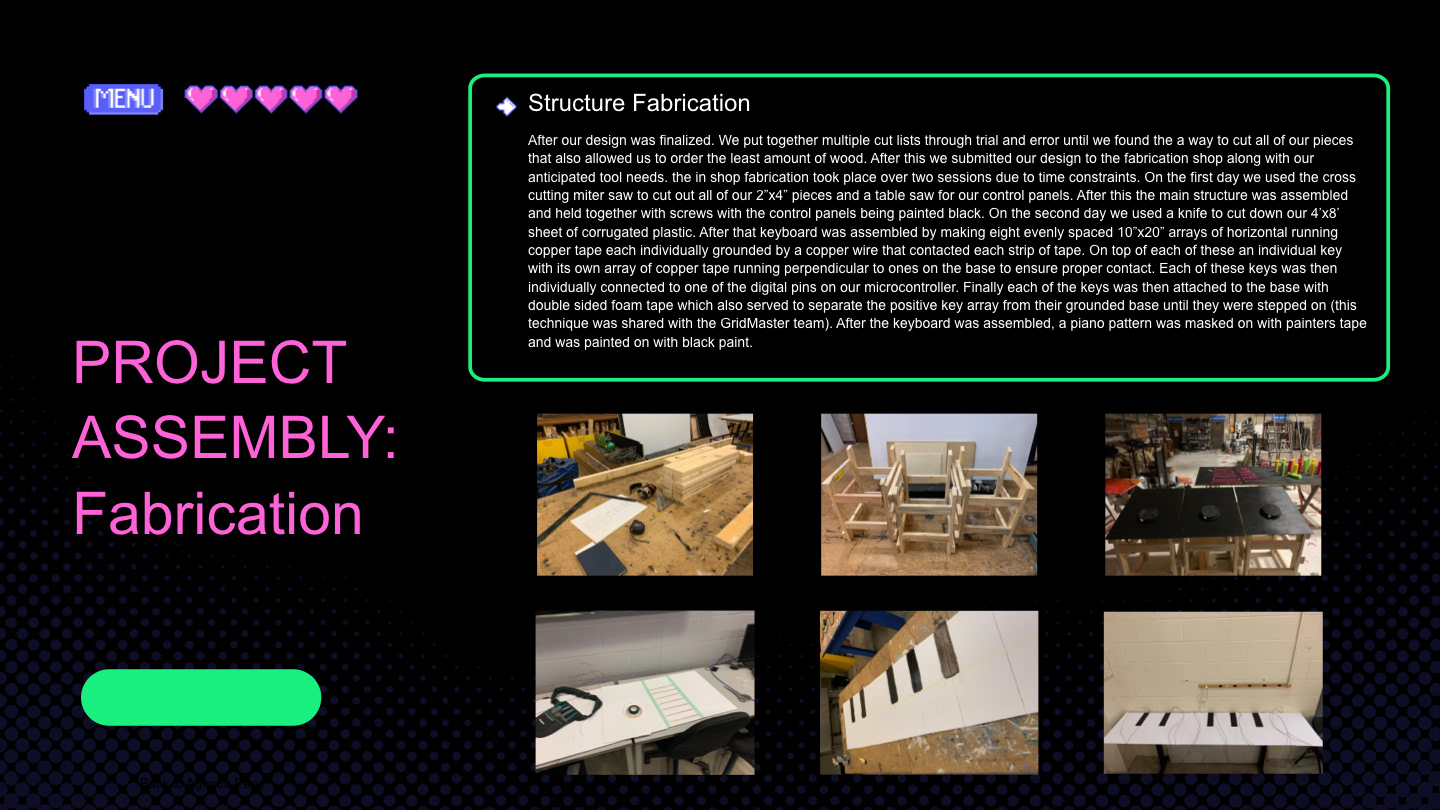
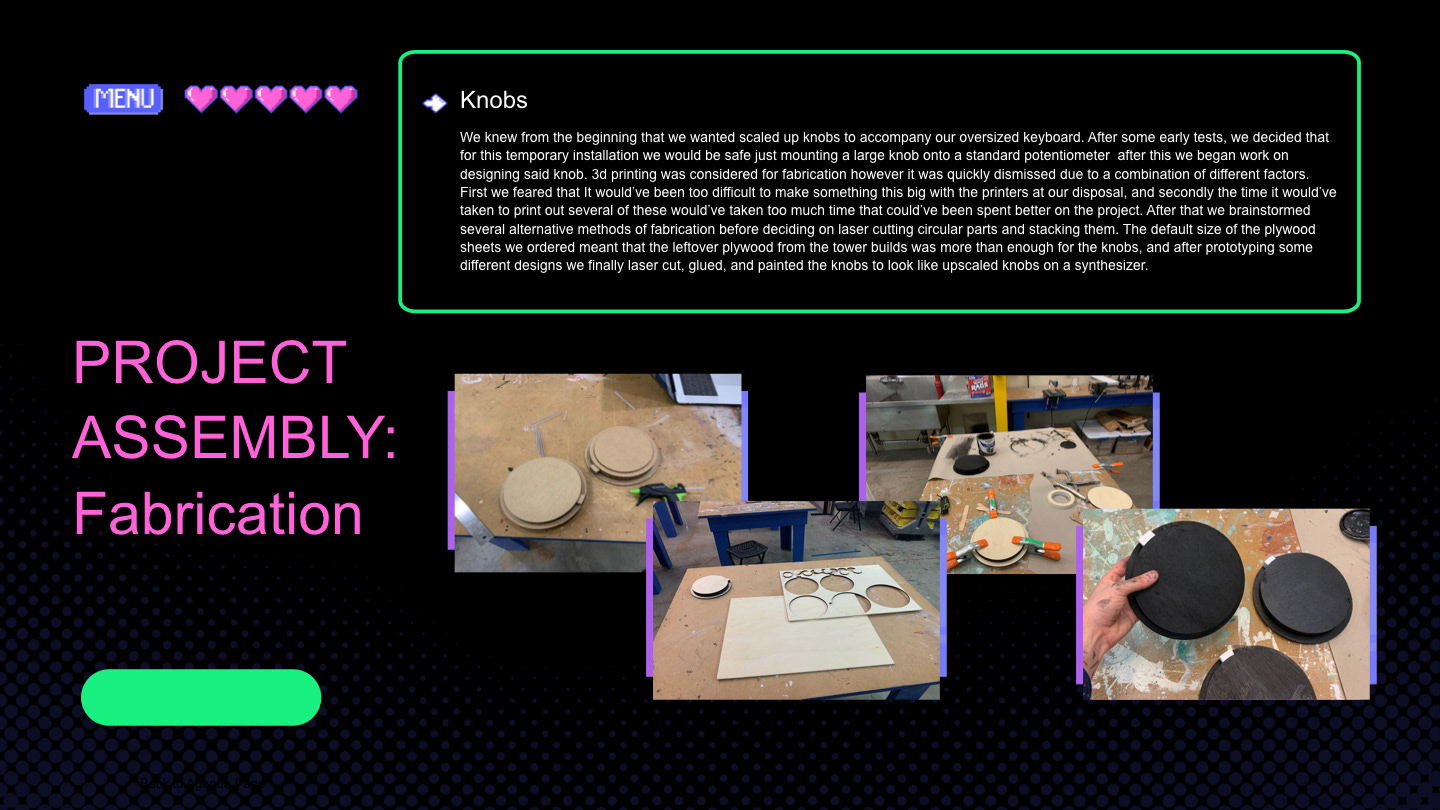
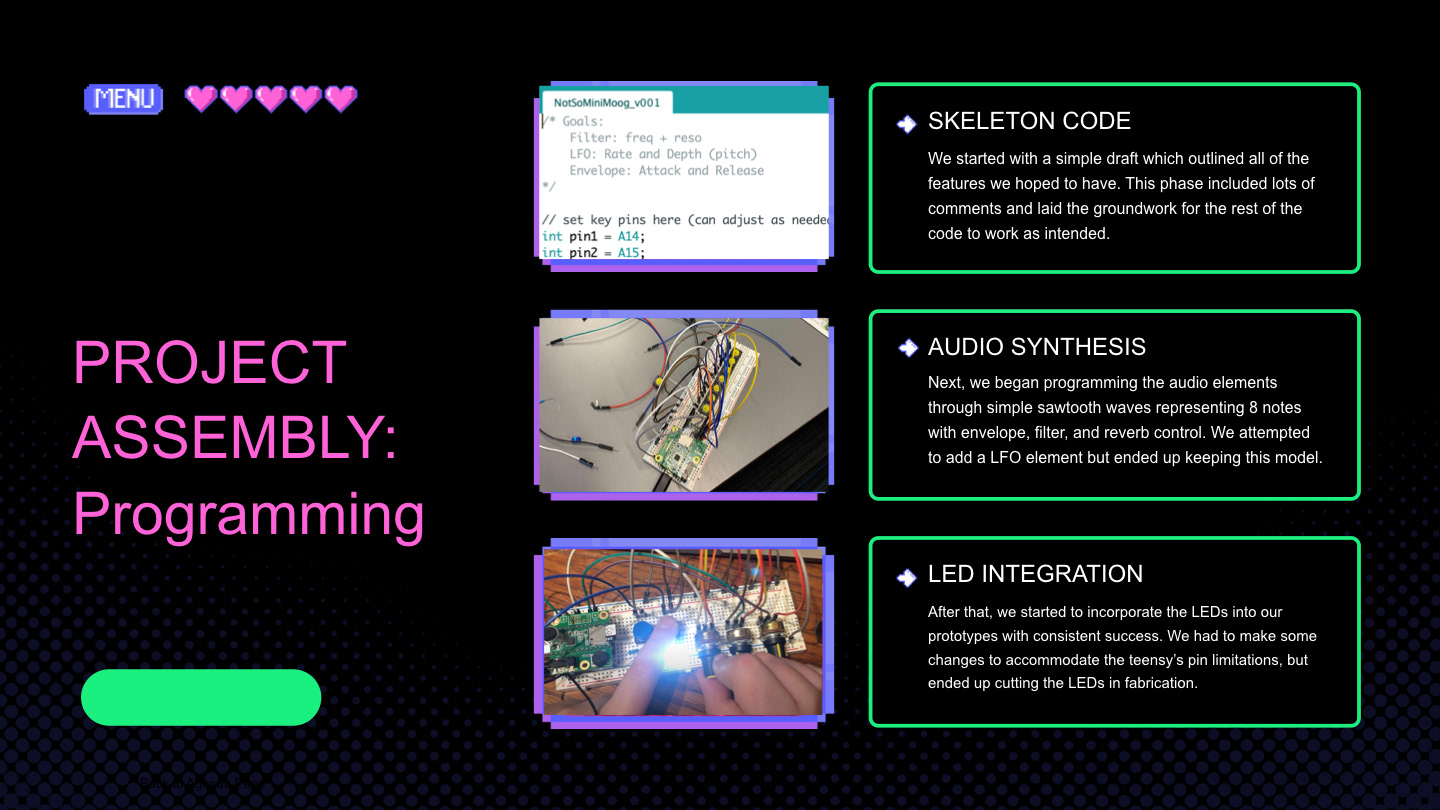

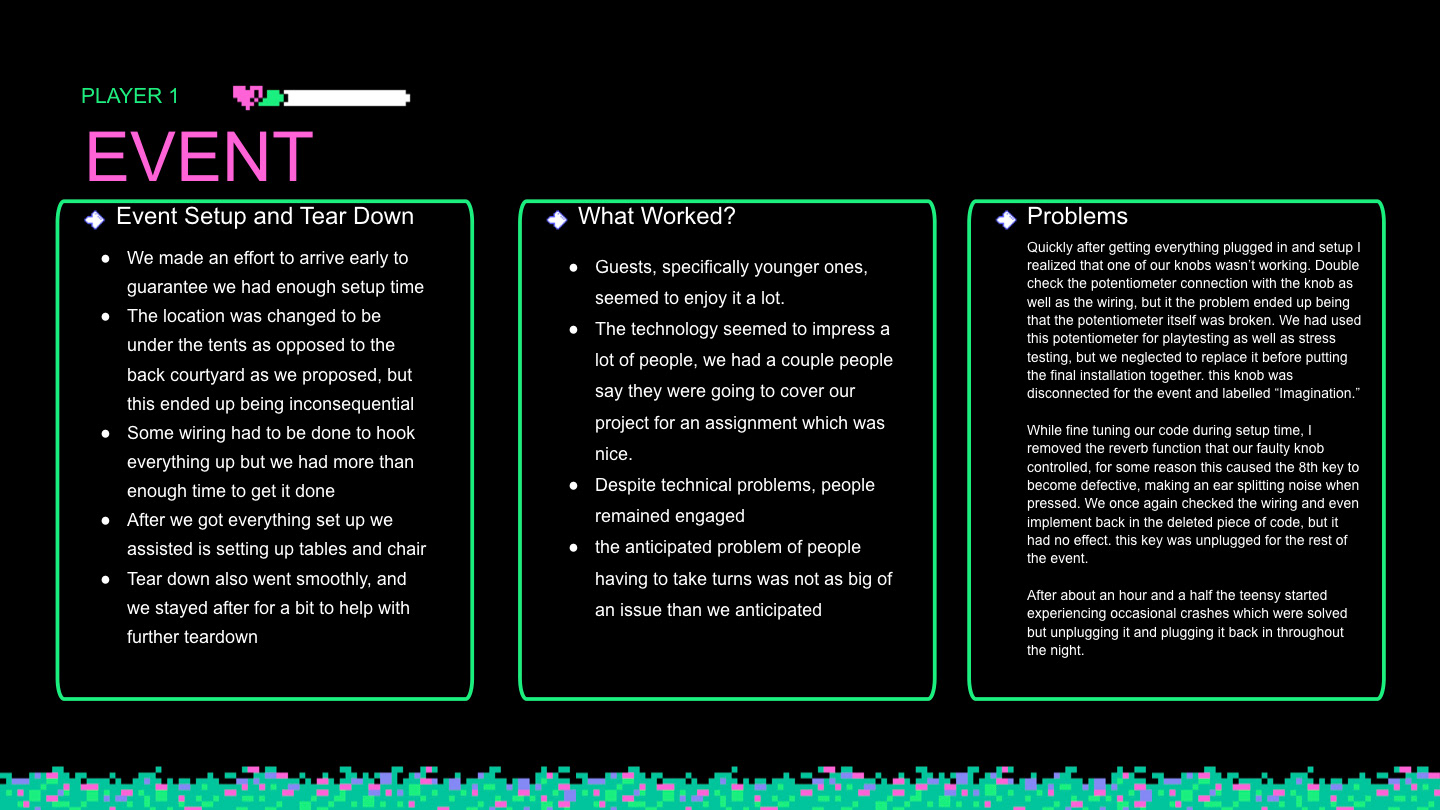
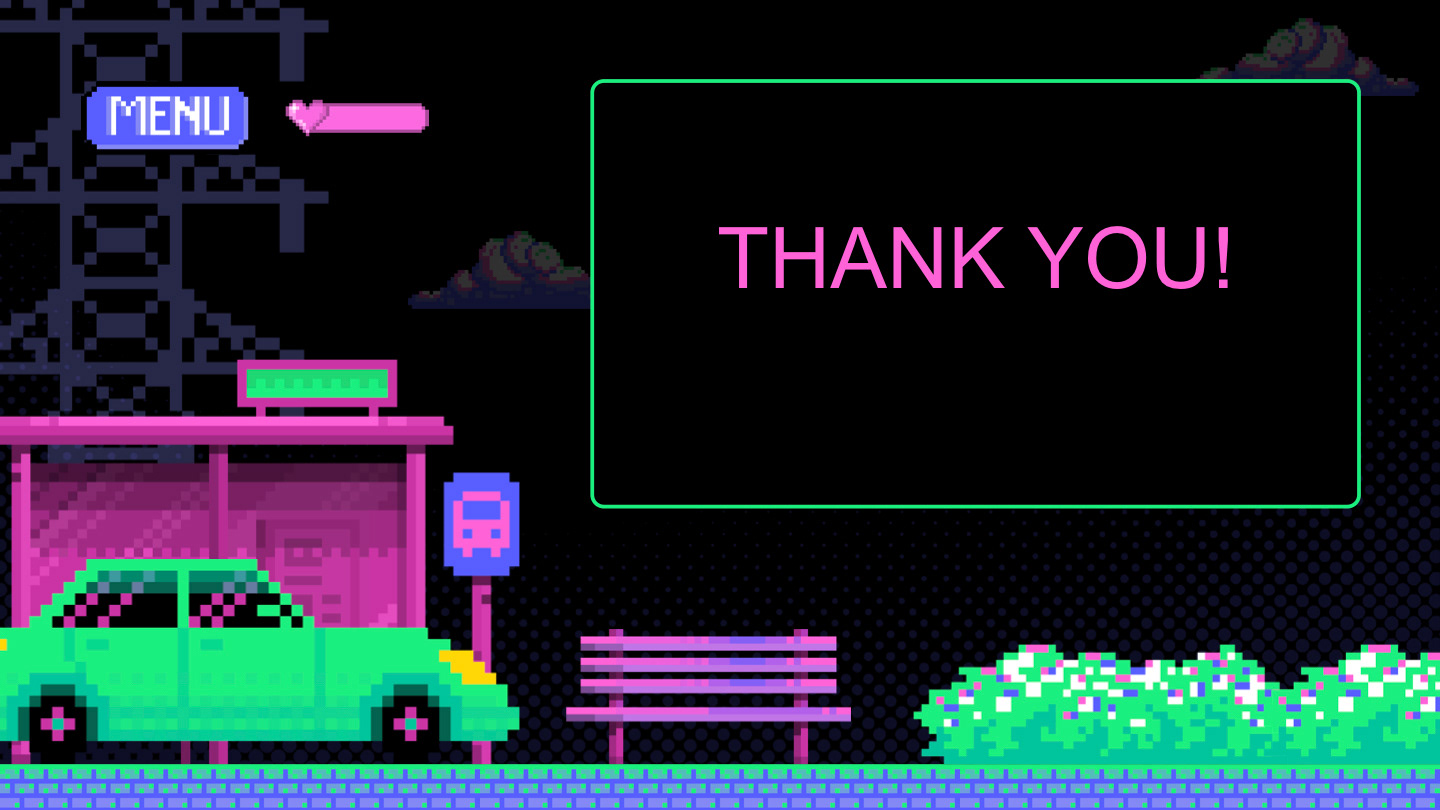
Story / Theme
Does this installation communicate the theme well in support of the overall event? Did it demonstrate applied research on the theme itself? Was technology well integrated in support of the installation or theme goals?
I truly do believe that the Not So Mini Moog installation effectively communicated the theme of the “Ride the Synthwave” event. The original Minimoog Model D was released in 1970 and was the first portable synthesizer and laid the foundation for audio synthesis to flourish in the late 70s through the 80s. Iconic musical artists of the era (including Donna Summer and Pink Floyd, among countless others) used this synthesizer in both live performances and studio recordings, utilizing the instrument’s uniquely iconic and versatile sound. Beyond the Minimoog itself, synthesizers in general function as a clear signifier of the 80’s theme and are a quintessential element of the Synthwave aesthetic - it’s even in the name!
In this project, the integration of technology was essential. Fortunately, we both had significant experience with audio synthesis thanks to Kyle Evans’ “DIY Synthesizers” course, which taught us the foundational knowledge of Arduino programming, audio synthesis concepts and history, and circuit building (including peripheral user input). To see more about this class, click here.
These skills served us well in programming and prototyping this project. We did, however, have to incorporate these skills with the large-scale fabrication elements, which Peter was mainly responsible for. The large scale was by far the biggest challenge in executing this project but was also the main “wow factor” that attracted visitors to interact with it. While the programming and execution were certainly difficult and pushed us as technicians, the system was still run through analog signal flow, maintaining the authenticity of the sound.
In conclusion, the Moog line of synthesizers was a breakthrough technology of the time, inspiring and facilitating the sound of the era on which the event was based. It was exciting to be able to offer a fresh and reimagined rendition of this iconic instrument for the “Ride the Synthwave” event and put the “synth” in “synthwave”.
Professionalism
Does this installation and operation reflect the level of proficiency and professionalism expected of an upper-level University Class? Was it executed proficiently?
While I was unfortunately not there to see the final execution of this installation on the day of the event, I do feel as though this installation reached the level of proficiency and professionalism expected of us as upper-level university students. I say this with confidence because we significantly expanded upon the prototypes we had built in another upper-division course, DIY synthesizers. In that class, we built several synthesizer prototypes to learn various audio synthesis techniques but had done very little playtesting or fabrication. This is not to say that the work we did in that class was insufficient in any capacity, as we did learn a significant amount of programming and synthesis concepts which helped us in completing this project, but it didn’t entirely prepare us for creating a large-scale, public-facing iteration of the prototypes we had previously made for that class.
As it was our first time building a project on this scale, it was certainly not a perfect execution, although I do feel as though it was proficient. All 8 “keys” worked as intended, as well as 2 of the 3 programmed knobs. Unfortunately, the LED portion was cut from the design at the last minute due to Peter being sick in the days leading up to the event. The LED code was ready to go and functional through the prototyping phase, but sadly there wasn’t enough time during the final fabrication push to integrate the physical LEDs into the public-facing design. While the lighting element may have supported the “retro-futuristic” aesthetic and supported that theming, I feel as though the installation was still successful as the main focus was the audio element. Upon asking my collaborator, Peter, what his thoughts were on the technical difficulties, he said:
"The keyboard and code both held up to tests a bunch of testing. It worked without issue for a good hour or two then started not responding for a minute or two and then coming back on. I ended up just unplugging and plugging it back in throughout the night. One of the potentiometers was also broken. I checked wiring several times and I think I just put too much stress on that knob while prototyping and forgot to switch it out for the final build. Also I ended up getting very sick the days leading up to the event so didn’t end up having the time to wire lights… I’m personally really happy with how the project ended up, I definitely think we killed it despite the technical difficulties and cuts."
I completely agree with everything he said. Further, I also feel Peter handled these issues with grace and professionalism. According to the feedback I received from some of my friends who went, he did an excellent job of emphasizing the elements that were functioning as intended without drawing additional attention to the elements which were not so functional. For example, people didn’t notice a missing lighting element because to the average onlooker, it was never intended to have one. Of course, we still learned many lessons that we can apply to future projects. For example, some of these technical difficulties may have been mitigated with more thorough playtesting and more sturdy hardware and/or fabrication.
Engaging / Fun
Is the experience fun or interesting for our guests? Did they have a good time experiencing your installation, did they share it with others? Did you actively invite guests to come to enjoy your installation?
From what I’ve heard, the Not So Mini Moog (which my roommate has dubbed the “megamoog”) was a massive success for our audience! I did actively invite my friends to visit the event and stop by the installation. I received many positive reviews, but I didn’t see many pictures or videos of it being shared on social media. I think it was a bit less “flashy” than the rest of the happenings at the event which may have made it less “instagrammable,” but it seemed to be a big hit for visitors and passersby. One thing that my roommate mentioned was that the sound was a communal experience, so it wasn’t limited to one user! Further, it was programmed to be polyphonic, so multiple users could interact with it at once, allowing for interaction between users to create sounds together. Our project facilitated interaction between strangers and friends alike through the communal experience of creating and hearing sounds.